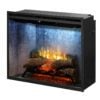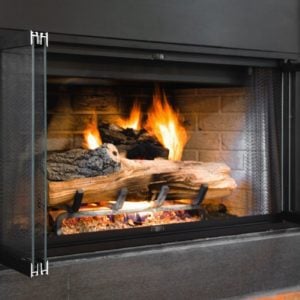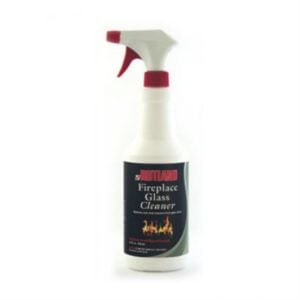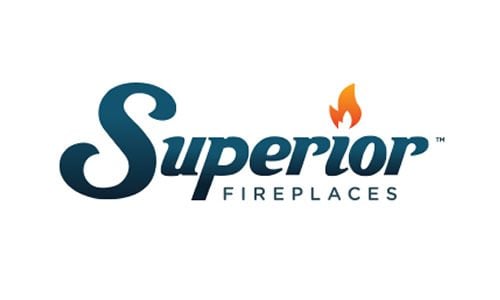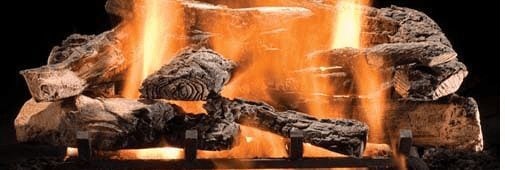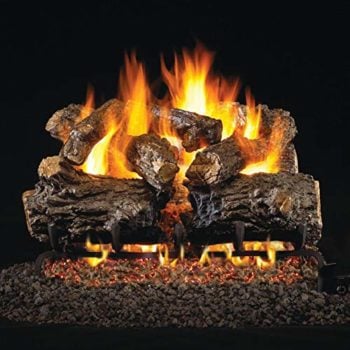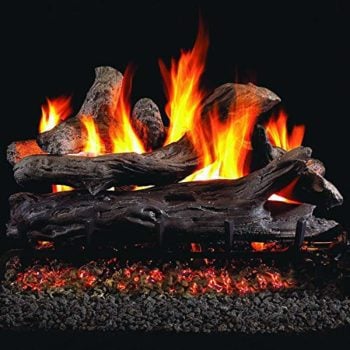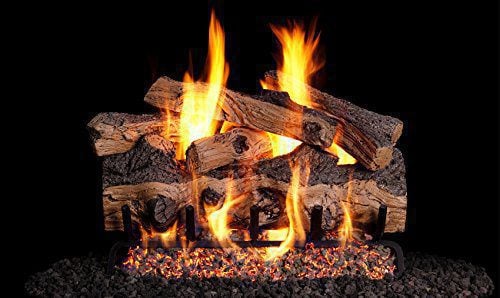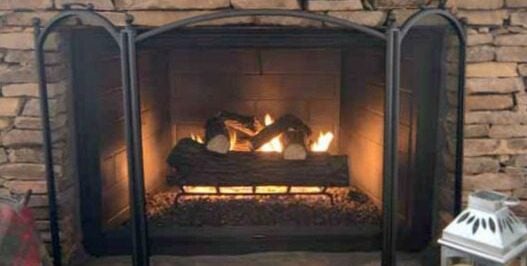Gas logs are a great alternative to a wood burning fireplace. They provide the warmth and ambiance of a wood burning fireplace with none of the hassle and clean up wood fires require.
| Storage | Starting a Fire | Cleaning the Firebox | Cost | |
|---|---|---|---|---|
| Wood Burning Fire | Requires a dedicated space for storing wood. If the space isn't covered, the wood can get wet and rot. Piles of wood also attract bugs and rodents. | Getting a fire started is a time consuming and often difficult process. You have to have kindling on hand, arrange the logs properly, and hope everything goes the way it should. | Once the fire has died down and cooled, which takes quite some time as is, you have to shovel the ashes and charred bits of wood out of the firebox. If you're not careful, ash can blow onto your floors and furniture. Even once you've gotten the ash out of the firebox, it will still be sooty and dirty. | You have to buy wood, obviously, but the ash and soot created mean you'll should also pay to have your chimney frequently cleaned. Wood is about twice the price of gas. |
| Gas Logs | Once installed, the gas logs only take up space in your firebox. | Starting gas logs is just a matter of turning on the gas and either striking a match or pushing a button (depending on the starter your gas logs have). It's that easy! | Ending a gas fire only requires turning off the gas. Clean up? Gas logs don't produce ash and only require seasonal cleaning. | While the logs themselves might seem expensive, they are an investment. Gas is much cheaper to burn by the hour than wood. They are also produce fewer sparks, which means less damage to the items around the fireplace. You can also burn your gas logs even if the power goes out to keep your home warm and provide light. |
If you have a wood burning fireplace with a working flue, you can install vented gas logs. If you have a ventless firebox, you can install vented gas logs.
Gas logs run on either propane or natural gas. They are essentially the same in performance. Use whichever you already have connected to your house.
Gas logs are much more appealing than they used to be. They are made from refractory cement to withstand heat, and many are hand painted based on real-world samples. The variety of gas log styles has also grown so you’ll easily be able to find a set that is most visually appealing to you.
As with any gas appliance in your home, you will need to be sue you are taking the proper safety precautions. You’ll still have to have your chimney inspected annually to ensure that the pipes are in good shape, and that your home and family are protected. A carbon monoxide detector should also be installed so a gas leak won’t happen without your knowledge.
If you are buying vented gas logs, a good bit of the heat produced by the logs will escape up the chimney. With ventless gas logs, all the heat will be emitted into the room. Vented gas logs, however, are more realistic with taller, more vivid flames.
Before purchasing, don’t forget to measure your fireplace and find the right size of logs. Check out our measuring guide for info on how to find an attractive and safe size of logs for your fireplace.




